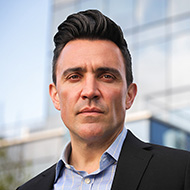Only takes 5 mins to read!
Failing to assert intellectual property ownership can prove a costly mistake for an entrepreneur.
There is a tendency on the part of entrepreneurs to assume that they can continue to develop their product without a patent, trademark, or copyright because they are just getting started. When one factors in the price tag of protecting intellectual property (IP) – $10,000 per patent and $2,000 per trademark – it is understandable why entrepreneurs may find themselves without adequate protection.
The folly of waiting to protect intellectual property:
Early stage inventors and entrepreneurs sometimes expect that if they can prove their product came first chronologically, their IP claims will be adequately protected. That is often not the case.
Both trademarks and patents can differ on a country-by-country basis. If an invention is sold in the U.S. before it is protected, there is a grace period of one year in which to file the application. However, that is not true in most places outside the U.S.
For example, if someone attends a trade show at NYC’s Javits Center and discovers an invention that is not protected but is clearly being advertised and publicized, then that invention will not be protectable in virtually any other country. Consequently, that invention is potentially subject to theft and legal international exploitation.
The role of international patents and trademark protection:
Preparing a product for market in the U.S. is a daunting project often involving teams including graphic designers, consultants, and advertising agencies – a task that requires the expenditure of considerable capital. For that reason, doing business outside the U.S. is advantageous for many companies. When aiming to tap other markets, too many up-and-coming businesses have found that their effort to expand ultimately fails because they had no trademark protection in the target country.
Case Study: A start-up based in the U.S. developed new video gaming technology. After securing the protection of his intellectual property in America, the company sought to expand into lucrative markets overseas. Their plans were derailed when they learned their intellectual property was not protectable in the target countries’ markets.
The dangers of shopping your IP around:
When courting investors, entrepreneurs and inventors alike need to be cautious regarding what they reveal about their product and to whom they reveal it. At the same time, potential backers like venture capital firms are not likely to decide favorably without learning more.
That is where Nondisclosure Agreements (NDAs) come in. It is vital that any new inventor or entrepreneur obtain an NDA from their potential investor(s) before divulging any trade secrets. The NDA does not have to be a lengthy document; most are only one page long. By doing so, the inventor or entrepreneur is creating the steps necessary to keep their ideas confidential and developing a paper trail, ultimately formulating a trade secret. To that same end, even a proper business plan should say in big, bold letters that the information contained therein is proprietary and confidential.
Intellectual Property moves at the speed of light. If you are unsure of how to proceed with safeguarding your idea, waste no time in contacting an expert. Join me next time for some more common pitfalls that entrepreneurs face, or contact me anytime.
Aaron Pierce
(212) 882-1752
299 Broadway, Suite 1405
New York, NY 10007
aaron.pierce@piercekwok.com
piercekwok.com

